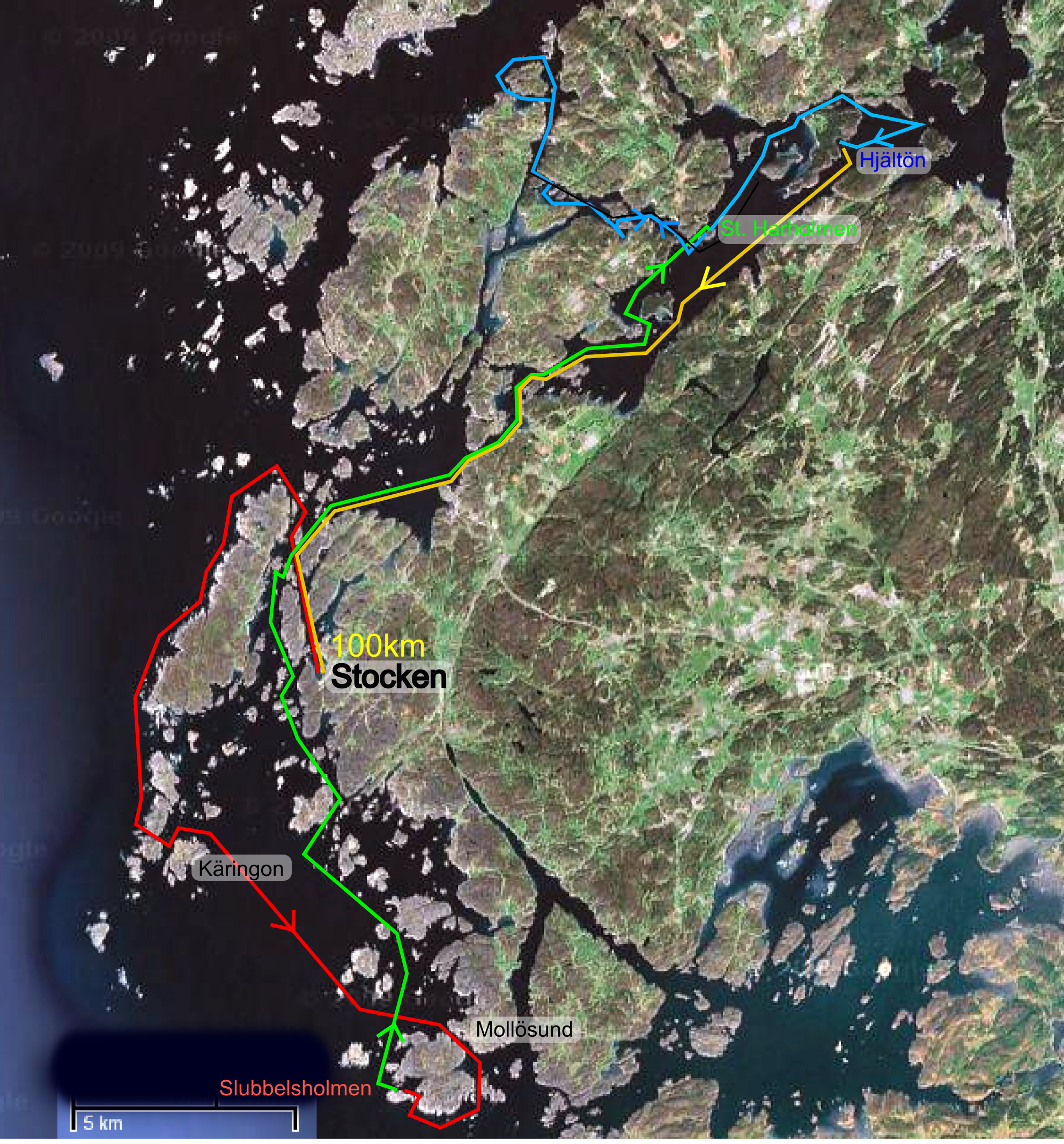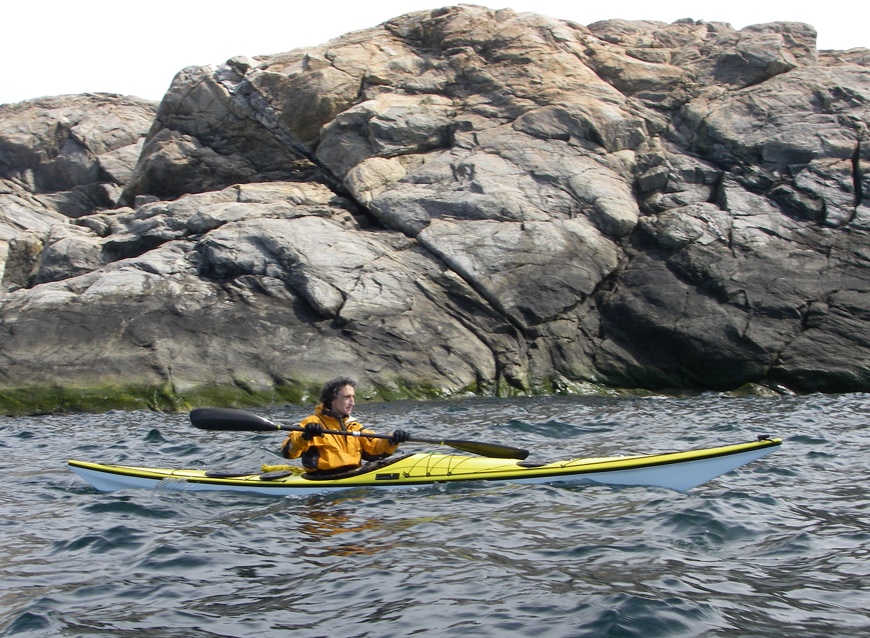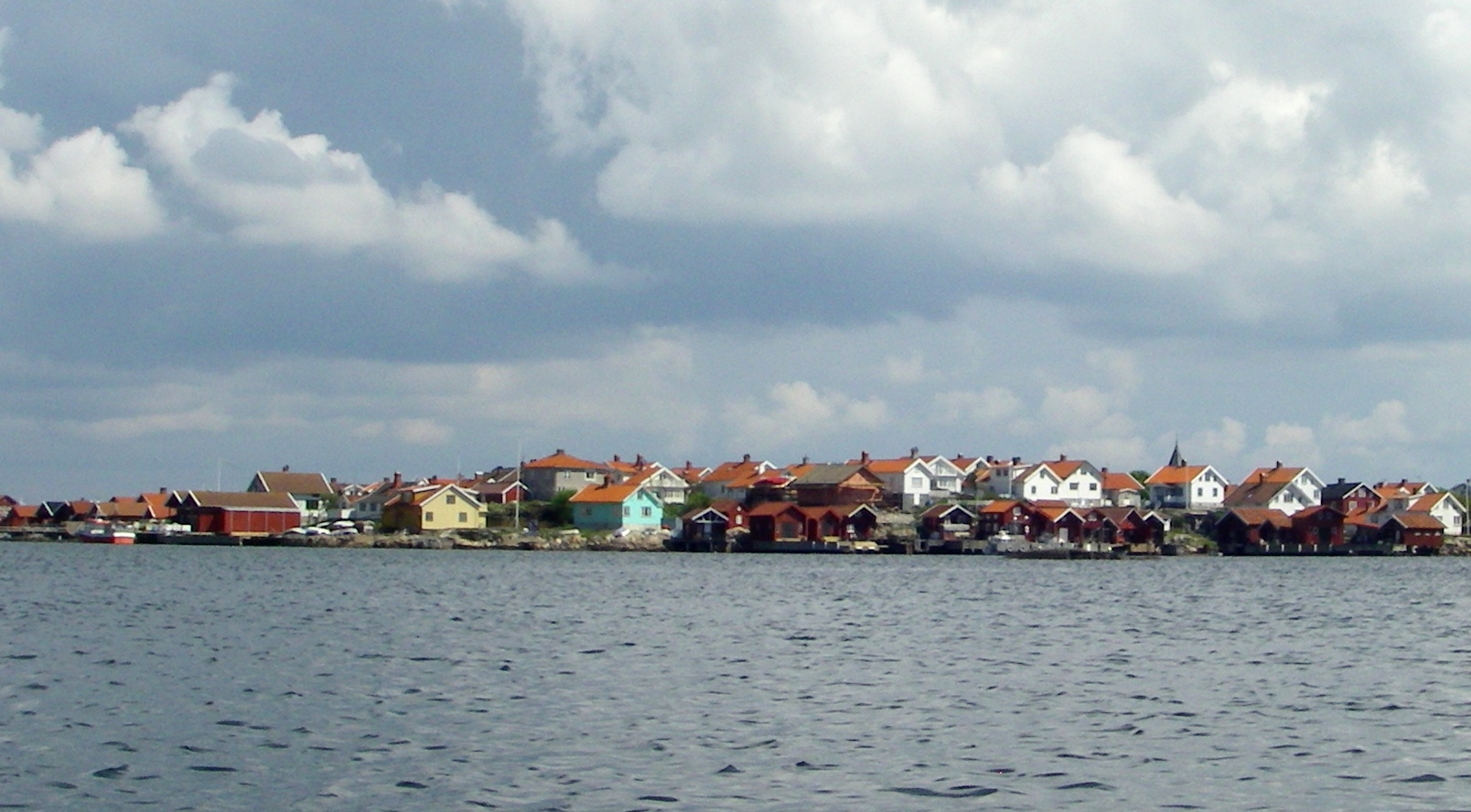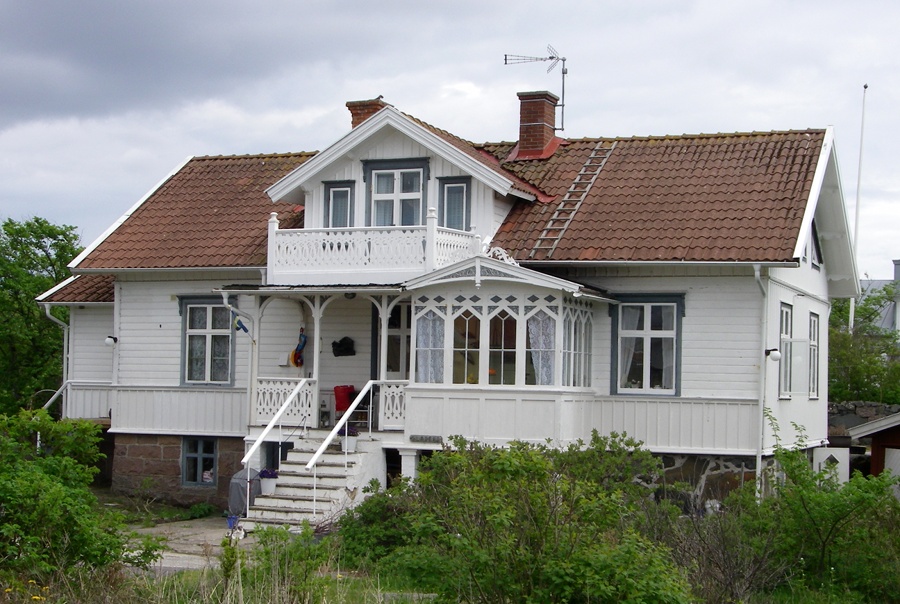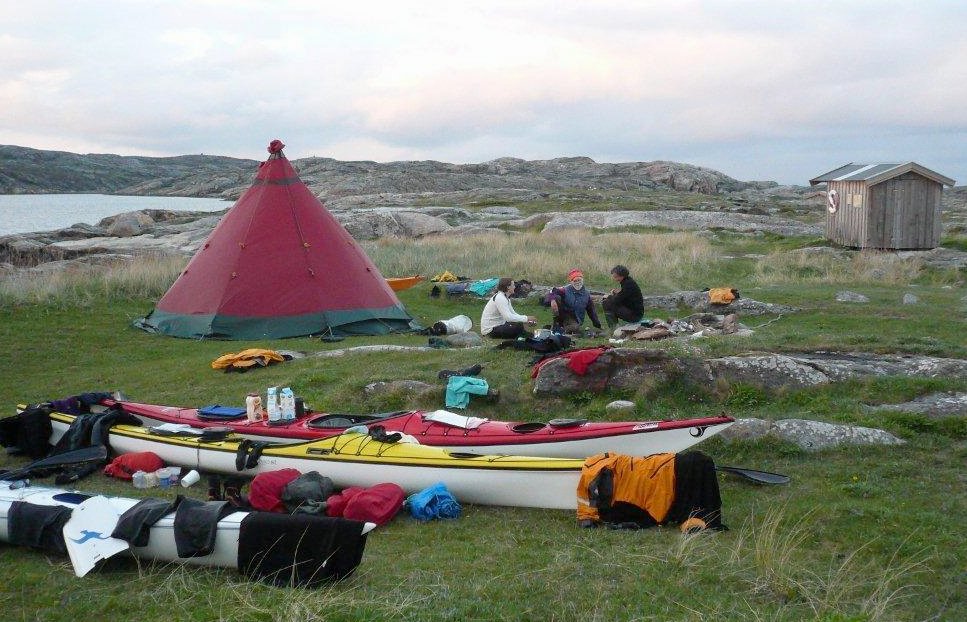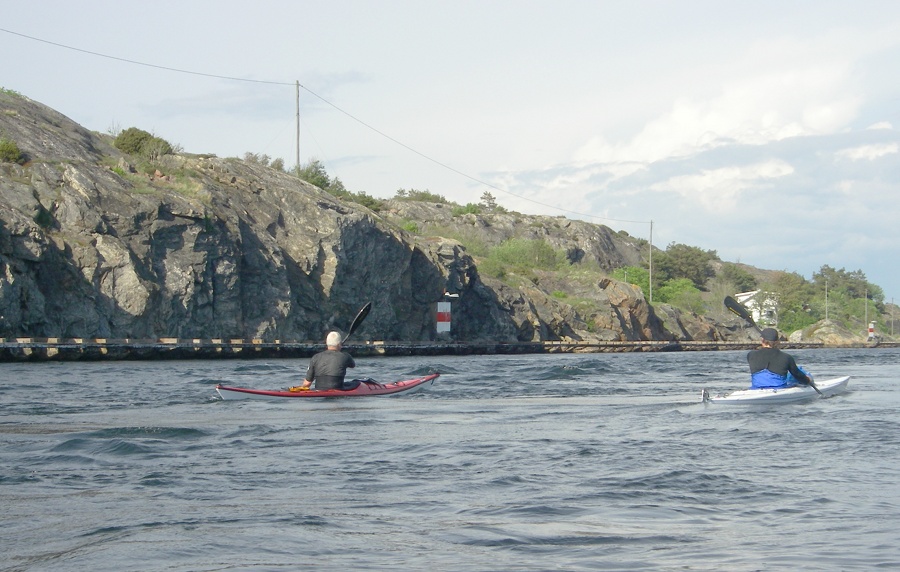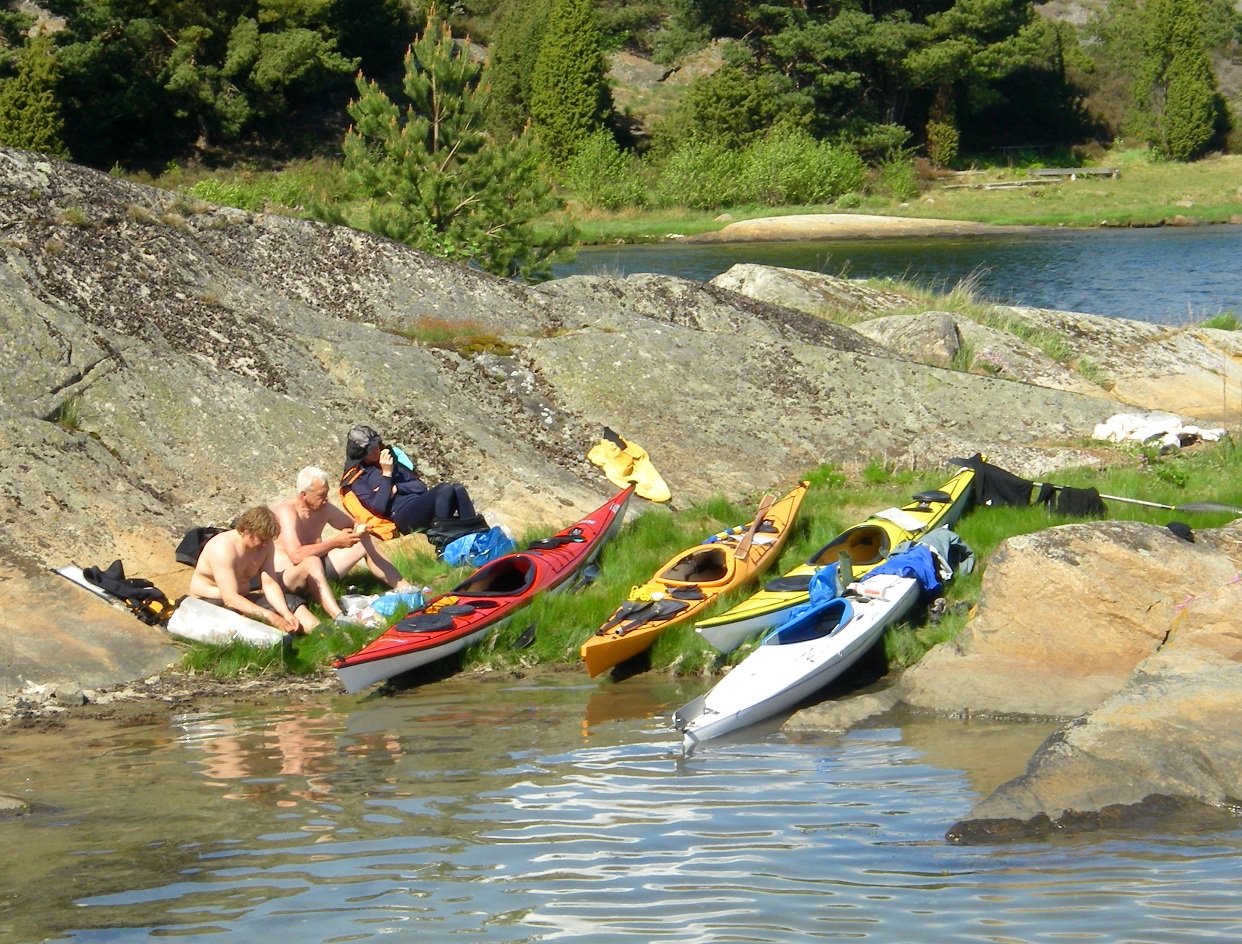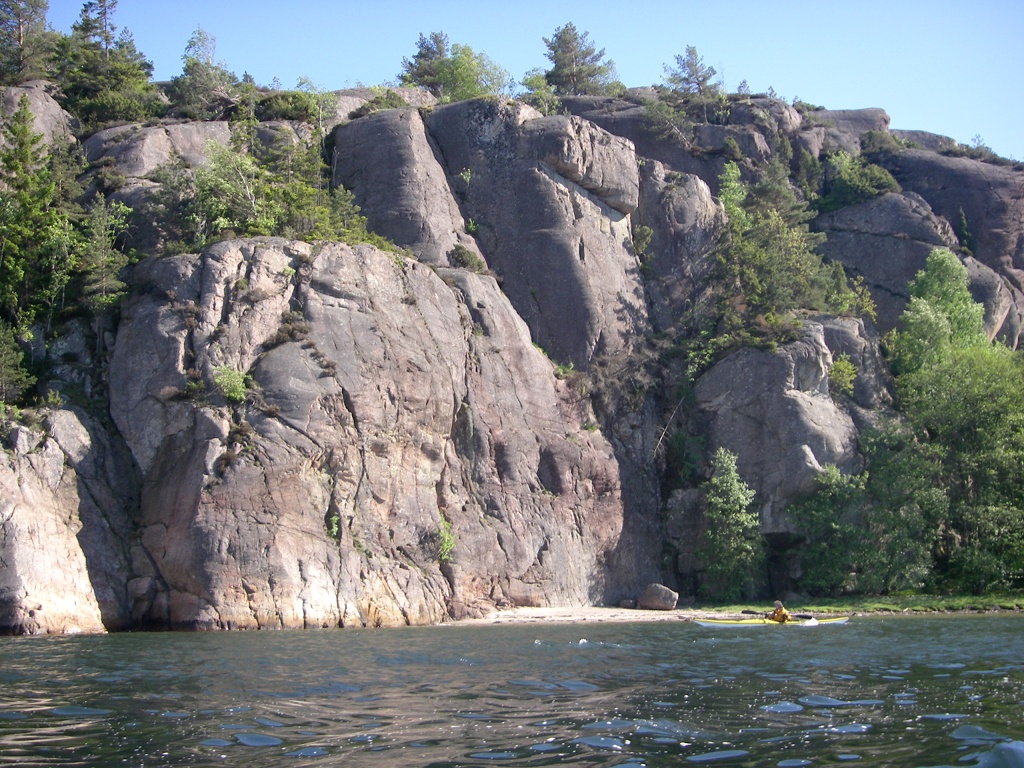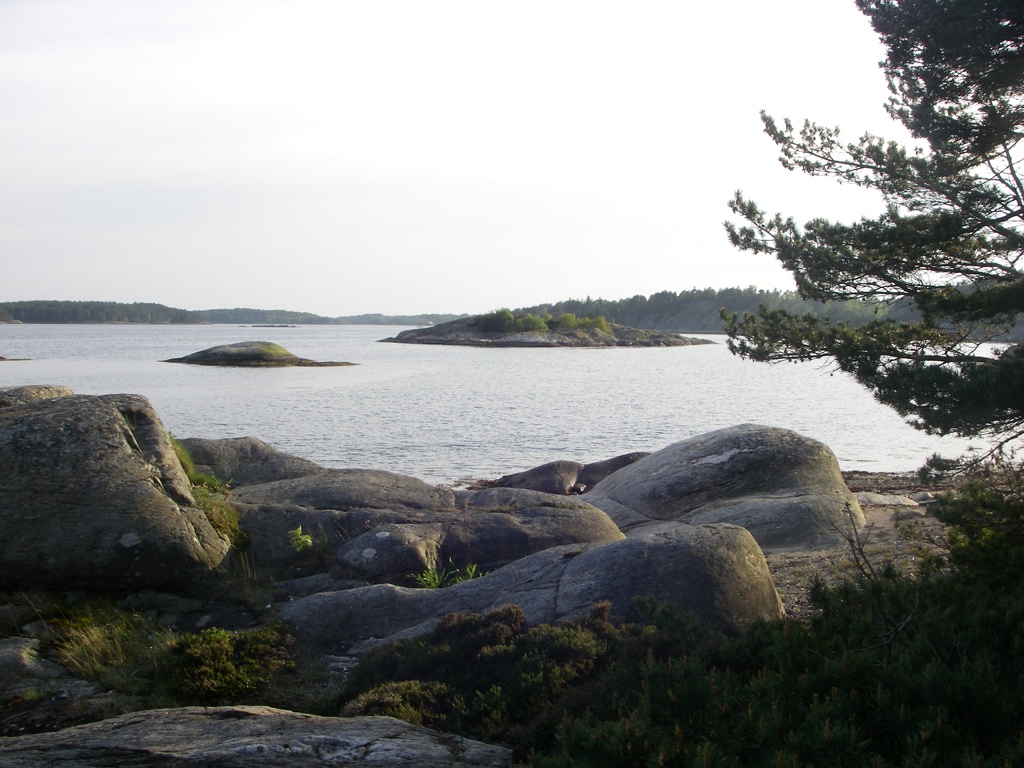The archipelago extending north from Gothenburg in Sweden is a wonderful kayak touring area, with exposed, austere granite islands and lush wooded fjords.
Our starting point was the campsite at Stocken, on the western edge of Orust. We were four members of the Vedbæk Canoe and Kayak Club in Copenhagen.
Jens, Jeppe, Tim and Bjørn
Our route is shown below
All these pictures are at a higher resolution than the display. Do what your particular browser requires to view the high resolution image.
The west coast of Stora Härmanö is exposed to the open sea and is harsh and devoid of vegetation.
Just behind this line of outer islands is the sheltered fishing town Käringön. This is delightful, because it is car free, with two-wheeled baggage wagons lined up at the harbour so people can push their groceries home along the network of footpaths.
We landed under the boat sheds, for a walking tour of the town.
It now seems to be a holiday home town, but there is some nice carpenter gothic architecture, typical of the homes of sea captains.
A five km paddle over open water brought us to the equally picturesque Mollösund. We passed through the narrow passage and further round the islands to the south to reach our campsite on Slubbersholmen. This forms a quiet lagoon, so we were not alone – it is a popular anchorage for bigger boats.
The next day we paddled northward and into the narrow channel leading to the network of fjords which surround the large island Orust. Although the tidal range is small, less than 2m including the effect of wind and atmospheric pressure, there is a fierce flow through the narrow channel.
Vessels are protected from being swirled into the channel walls by a continuous sturdy timber crash barrier. Here Jens and Jeppe are forcing the narrows, typically viewed from behind, since the 73 year old author of this post hardly ever gets an approaching view of his paddling companions. However, we miraculously all regrouped at the agreed meeting and resting places.
The inner fjords are well wooded, with abundant grassy spots for relaxation. There is abundant wildlife. The grass meadows are calcium rich from sea shell fragments and have a varied flora. But spring was late so very few flowers were blooming. The picture below shows a flock of Eider duck.
The scenery is varied, with surprisingly bold rock formations. Here is Bjørn below the crags of Högholmen.
A fortunate side effect of the lively streaming of the clear water is the abundance of shellfish. Here is Jens collecting oysters for supper. The water is only a few centimetres deep, so harvesting is a simple matter of dipping a hand in the water to grab the shell.
It was good that we had experienced outdoor cooks with us. Here is Jens’ system for cooking oysters, using a stainless steel grill and the aragonite cooking vessels provided by the oysters.
We enjoyed mostly good weather, being forced back by high wind once. These three and a half days spent around Orust were a memorable experience, combining the shiver of anxiety cruising past the exposed outer islands, the charm of the remote human settlements, the lushness of the inner fjords and the abundance of the edible wildlife.
We traveled about 100 km in three and a half days. There are many more pictures, and an index to where they were taken.
tim P

